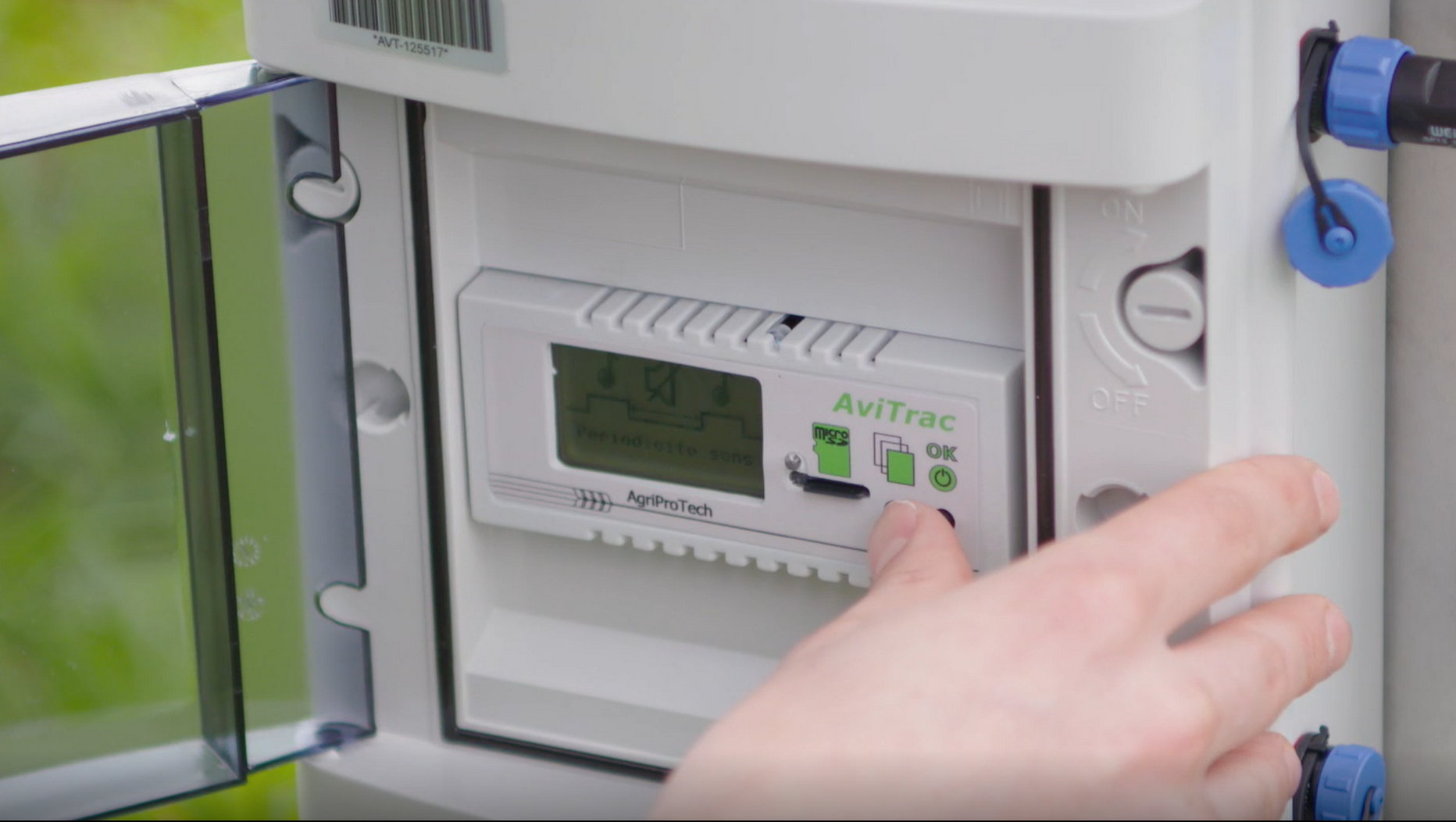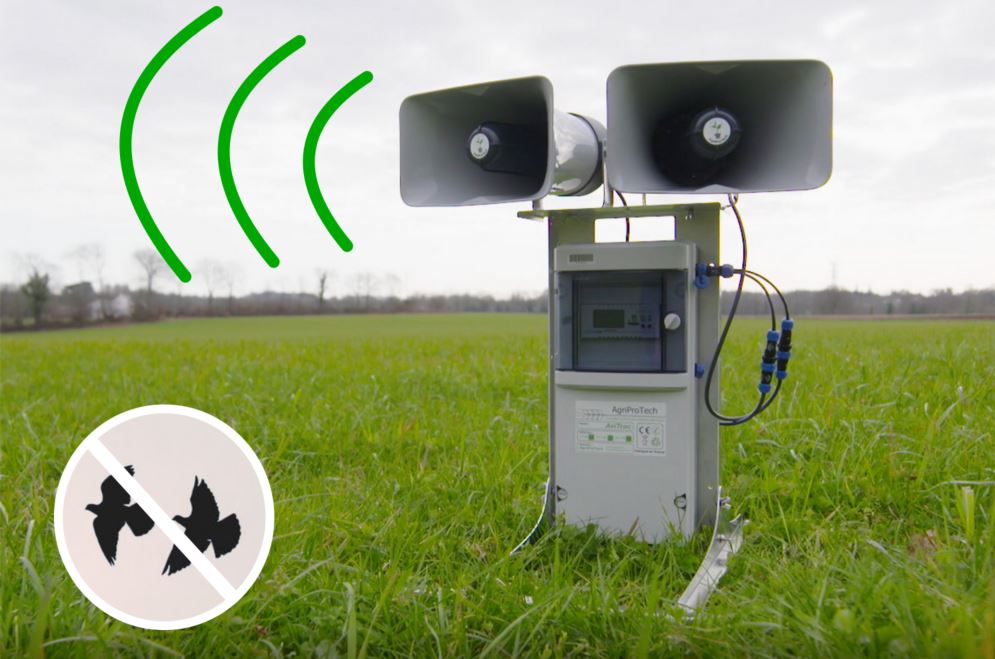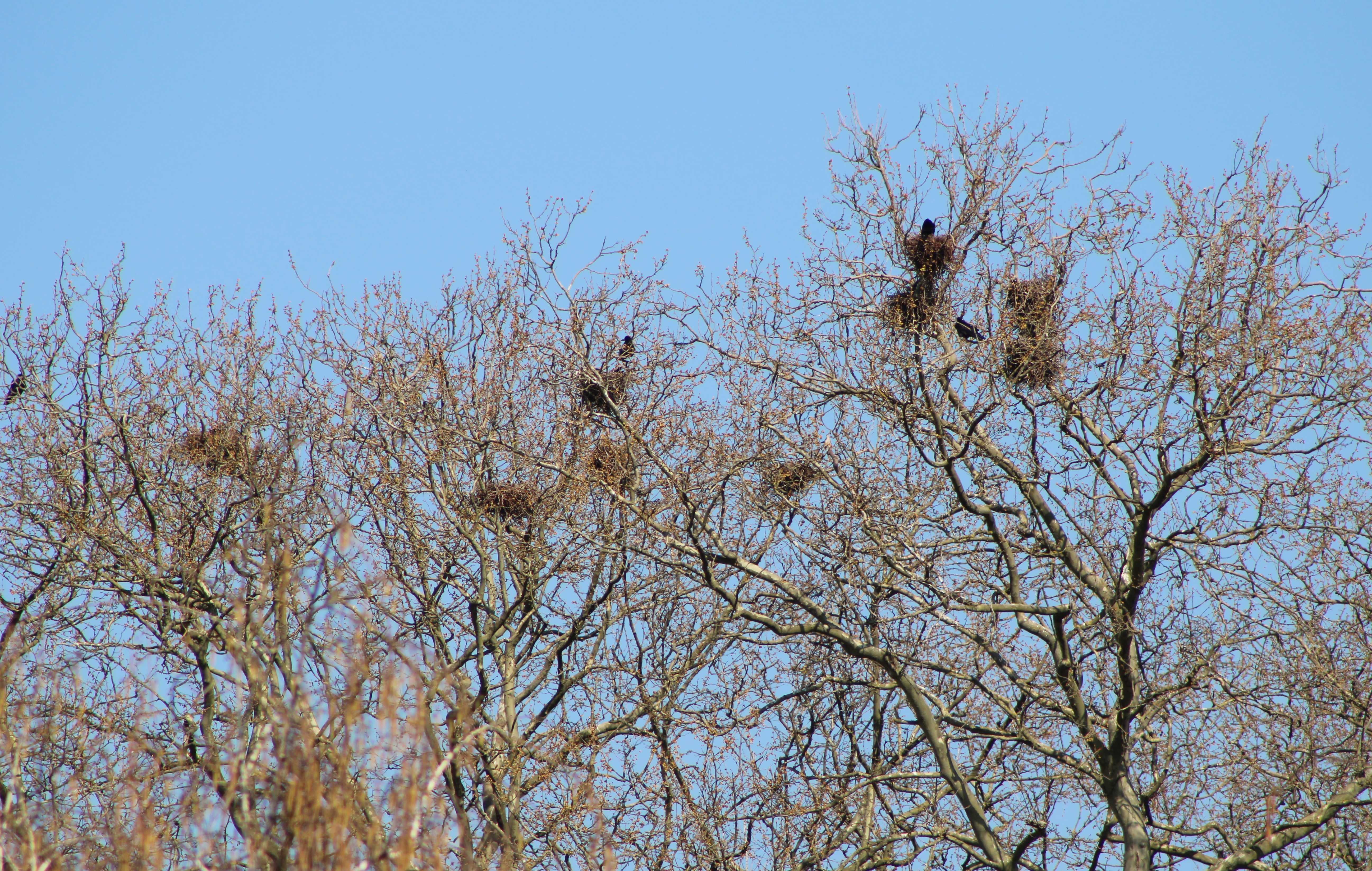In this article, we discuss all the keys to successful bird scaring. It is a compilation of the advice we give on a daily basis to users of AviTrac® repellers. We hope you find them useful.
If you have any further questions, don't hesitate to comment on this article!
When should this bird repeller be used?
It should be installed at the start of the plants' sensitive period. For example, as soon as sunflowers and maize are sown.
It's easier to get the birds to leave when they haven't yet "settled in". When they have already started to feed regularly on a plot, it is much more difficult to dislodge them. They are now prepared to take more risks to feed and will be less sensitive to scare signals.
The effect of a scarecrow will often be less if it is installed at the second reseeding.

How to program and install it?
It may seem obvious, but the appliance must be programmed correctly. To do this, you need to read the manual supplied.
Here are the essential points to remember:
-
Move the device regularly
This allows you to maintain a dynamic scare by regularly changing the location of the source of the sound emissions.
-
Position the device as close as possible to the areas where birds cause damage
Often, the damage is not uniform across the plot. Birds have their favourite "corners" where the damage is greatest. These must be identified beforehand and the AviTrac® bird scaring devices positioned as close as possible.
-
Vary the "repertoires selected" to reinforce the surprise effect
For corvids, for example :
- Days 1, 2, 3: Natural calls 1 + Corvids Synthesis
- Days 4, 5, 6: Natural calls 1 + Physiological discomfort
- Days 7, 8, 9: Natural calls 1 + Interspecific ...

-
Emit at maximum power if possible (Volume 15 or 30)
Take into account the proximity of dwellings.
-
Respect an interval of at least 20 minutes between each signal
Below this interval, there is a risk of a rapid habituation effect. The more birds hear the scare signals, the more they "integrate" them and the more they lose their effectiveness. It is therefore important not to give them too often.
We understand that sometimes 20 minutes seems a very long time. If the birds return too quickly, we need to find out why they are attracted to the plot in question.
What should be done if the birds remain on the plot after all?
Although repulsive sound signals have no effect on birds, the most common causes are as follow :
There is a corvids "roosting spot" close to the plot
Birds gather in trees close to your plot, in large numbers. So they have a place to stay and food to eat within a short distance, which is very practical!
Unfortunately, the damage is likely to be much greater on the surrounding cultivated areas. Contact us so that we can advise you on the means available to you in this situation.
The device was installed too late, when the birds had already begun their damage.
They have therefore become "attached" to this plot, which provides them with an abundance of food, and it is now very difficult to dislodge them. It is sometimes possible to scare them away by installing different types of additional scaring devices: visual and acoustic. In addition, a stronger human presence will be required.
It is therefore advisable to keep the AviTrac® bird deterrent and use it much earlier for the next season (do not forget to fully recharge the battery before wintering).
What additional bird control solutions car be used?
In cases of very high pressure (dormitory nearby, large number of birds, etc.), it is necessary to vary the means used to keep the birds away:
- Kites, balloons, etc …
- Visual option for AviTrac®: the ManTrac is available in yellow and red for an added element of surprise
Do you have any other questions? Would you like to share your tips with other AviTrac® users? Comment on the article below!














